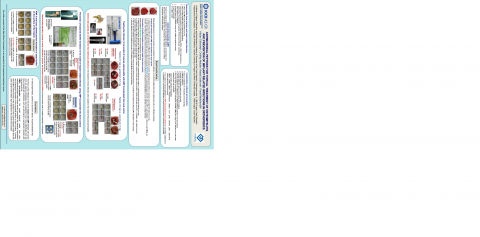Novel antimicrobial peptides for topical treatment of osteomyelitis and prevention of implant-related infections in orthopedics
INTRODUCTION:
Musculoskeletal infections are among the most serious problem in orthopedics. Treatment of infectious complications in orthopedic surgery must be complex and often long-term. The basis is a surgical therapy. The treatment is more effective by topical application of new antimicrobial agents with the help of local carriers.
TECHNOLOGY (INVENTION) DESCRIPTION:
We designed and synthesized several antimicrobial peptides (AMP). These new analogs exhibited high antimicrobial activity against majority of common causative agents of osteomyelitis (determination of MIC). We evaluated efficacy of these peptide analogs in the model of induced osteomyelitis. In this experimental model the peptides were released from the local carrier into infected spongy part of the human bone sample to eradicate induced osteomyelitis. In another experimental the peptides prevented the bacterial colonization and subsequent formation of the bacterial biofilm on their surface. The toxicity of some of these analogs against eukaryotic cells measured as hemolytic activity was very low. We did not notice any signs of local or systemic toxicity in the laboratory rats.
ADVANTAGES OVER EXISTING SOLUTIONS:
Treatment of osteomyelitis is more effective by topical application of antimicrobial agents with the help of local carriers. Our peptides may advantageously be combined with a local carrier. Bacterial load of the infected area of the bone was significantly lower after treatment with the peptides with a carrier than in an infected area where only the local carrier without peptides was applied or only the local carrier with antibiotics such as vancomycin or gentamicin. AMP has a different mechanism of action compared to antibiotics. AMP acts both to gram positive and gram negative bacteria, including antibiotic-resistant and also act to mycosis.
DEVELOPMENT STATUS (STAGE):
Efficacy of AMP we verified in models of induced osteomyelitis and in rats. Certain cytotoxicity tests were done.
PUBLICATIONS:
Čeřovský V. Antimikrobiální peptidy izolované z hmyzu. Chem. Listy 108, 344-353 (2014) Monincová L., Buděšínský M., Slaninová J., Hovorka O., Cvačka J., Voburka Z., Fučík V., Borovičková L., Bednárová L., Straka J., Čeřovský V. Novel antimicrobial peptides from 15 the venom of the eusocial bee Halictus sexcinctus (Hymenoptera: Halictidae) and their analogs. Amino Acids 39, 763-775 (2010) Oyston P.C.F, Fox M.A., Richards S.J., Clark G.C. Novel peptide therapeutics for treatment 35 of infections. J. Med. Microb. 58, 977-987 (2009) 22 15. Otvos L. Jr. Antimicrobial peptides isolated from insects. J. Peptide Sci. 6, 497-511 (2000)
IP PROTECTION STATUS:
PCT application with number: PCT / CZ2017 / 050,001th
TECHNOLOGY / IP OWNERS :
PCT application with number: PCT / CZ2017 / 050,001th RNDr. Čeřovský Václav, CSc., IOCB, Prague MUDr. Melicherčík Pavel, Ph.D., First Orthopedadic Departement, Medical Hospital Motol Mgr. Nešuta Ondřej, IOCB , Praggue

More information
More information is available upon signing a CDA / NDA (Confidential Disclosure Agreement / Non-Disclosure Agreement)